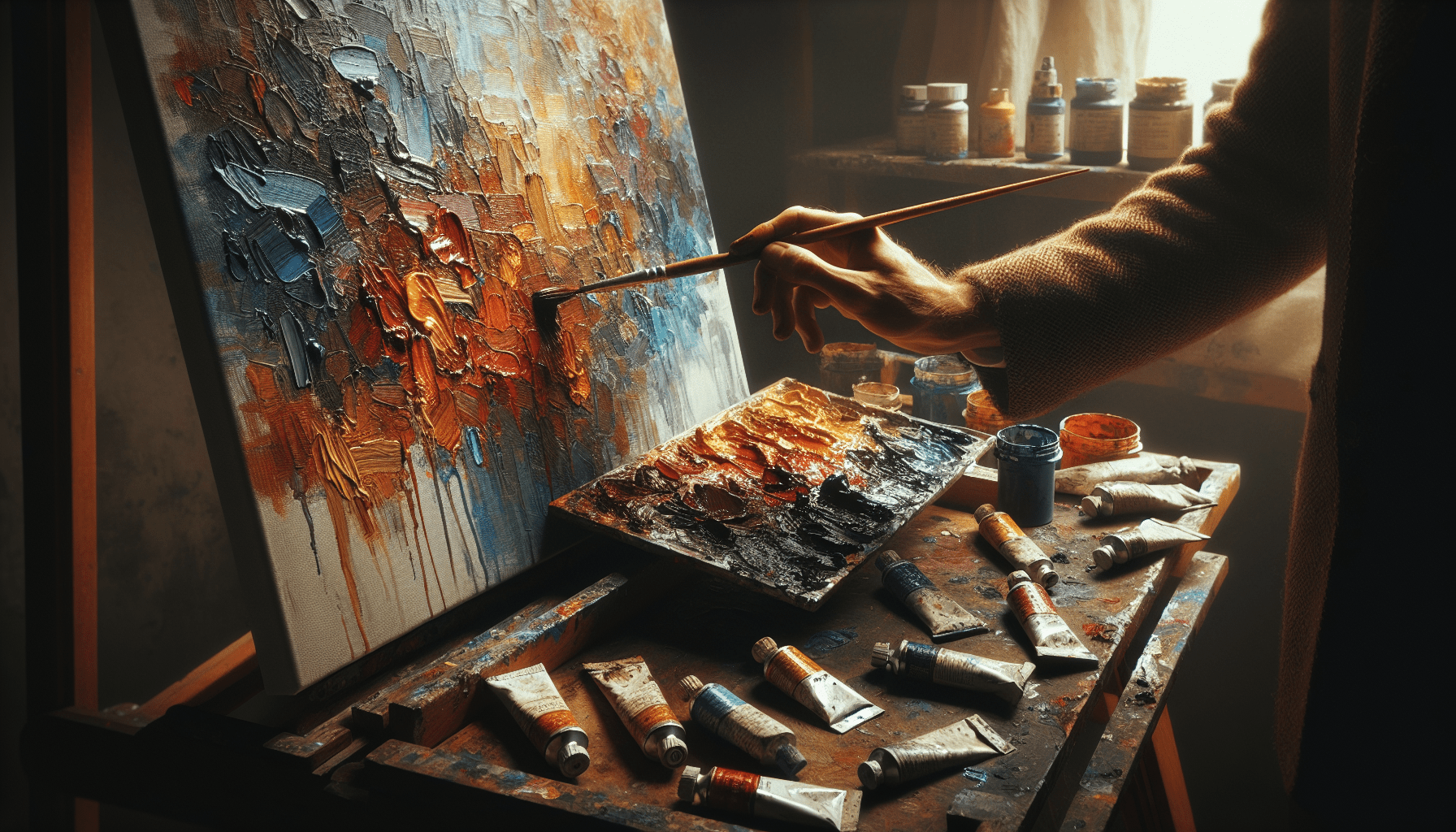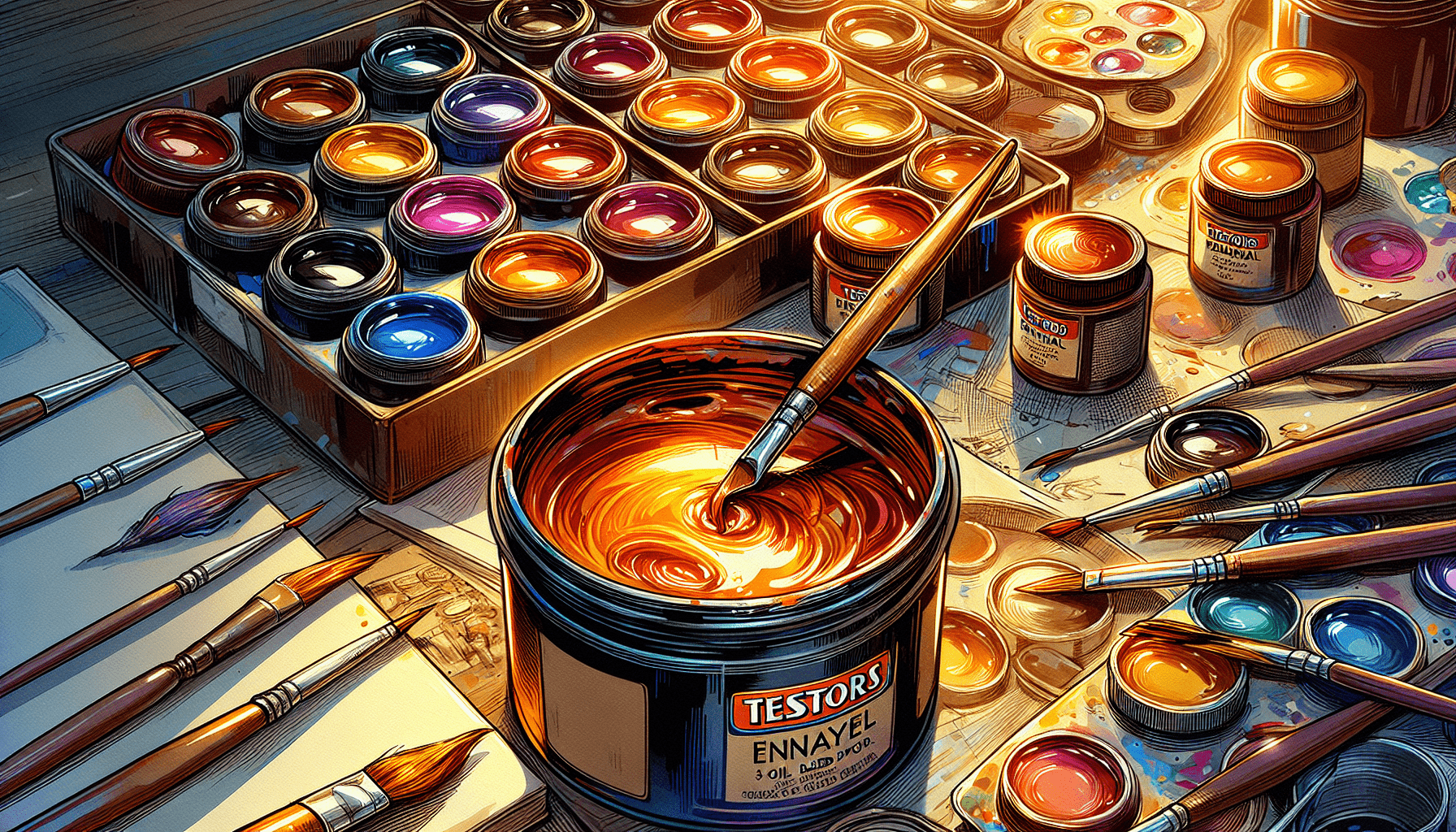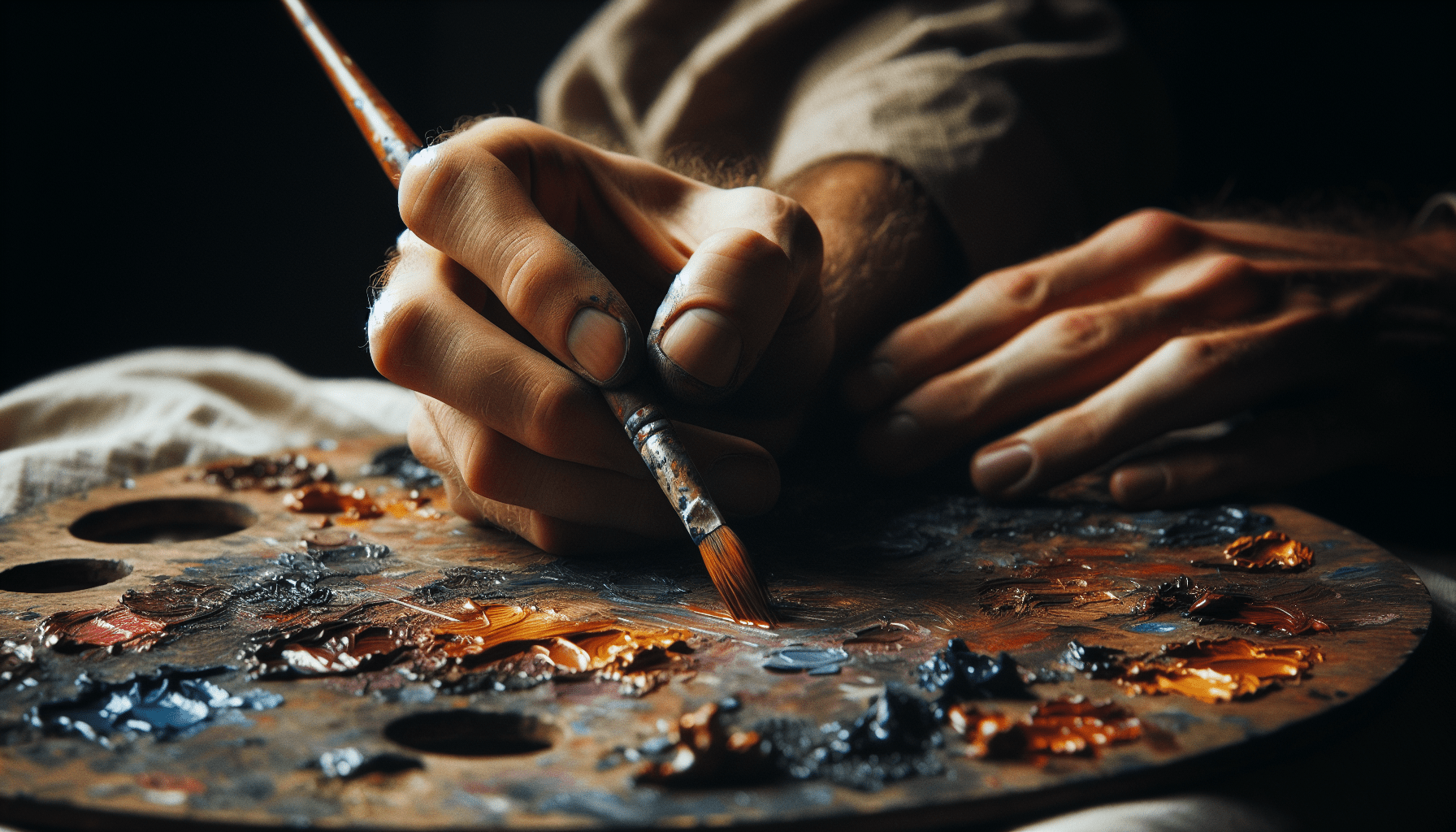In the fascinating world of easel painting, oil has established an incontrovertible dominance, consistently held in high esteem by artists across the globe. This article sheds light on the pivotal role oil plays in enhancing the expression, texture, and longevity of easel painting, underscoring it as the preferred choice for countless artists since the Middle Ages. As you navigate through this article, you will discover why oil, despite the plethora of mediums available today, continues to hold the reins in the realm of easel painting.
Historical Significance of Oil in Easel Painting
The place of oil in easel painting is deeply rooted in history with valuable contributions to the world of art. The widespread adoption and ever-growing popularity of oil paints can be attributed to their remarkable features, which have enabled artists to create long-lasting masterpieces.
Introduction of Oil Paints
The introduction of oil paints marked a significant milestone in the history of art. Drawing upon the innovative spirit of artists, oil paints provided an opportunity for the exploration of novel painting techniques, thus expanding the boundaries of creative expression. The development and refinement of oil paint formulations signified a turning point, redefining the means and manner of artistic creativity.
Versatility and Durability
Oil paints are lauded for their versatility and durability, garnering the favor of artists for centuries. Capable of enduring the passage of time, artworks created with oil paints maintain their vibrancy and integrity. The ability to withstand various environmental conditions makes oil paints an outstanding medium for easel painting.
Visual Effects and Techniques
The use of oil paints brings a distinct depth and richness to artistic work. Artists can employ various techniques to manipulate oil paints, exploiting their consistency and adaptability to achieve stunning visual effects. The malleability of oil paints allows artists to produce a spectrum of textures, contributing to the aesthetic complexity and visual spectacle of the work.
Chemical Properties of Oil Paints
An understanding of the distinctive chemical properties of oil paints is essential to fully appreciate their application in easel painting.
Composition of Oil Paints
The composition of oil paints involves a blend of pigments and oil, usually linseed oil. This combination constructs a paint that delivers vibrant colors and a smooth, buttery consistency ideal for easel painting.
Drying Time and Workability
The relatively slow drying time of oil paints provides artists with ample opportunity for continuous manipulation, adjustments, and corrections during the painting process. This extended workability equips artists with flexibility in their creative endeavors.
Layering and Glazing Techniques
Owing to their slow drying characteristics, oil paints enable the implementation of layering and glazing techniques. Artists can build up layers of paint over time, creating a remarkable depth and luminosity in their work. Glazing, a technique involving the application of thin layers of transparent paint, can also be easily achieved with oil paints.
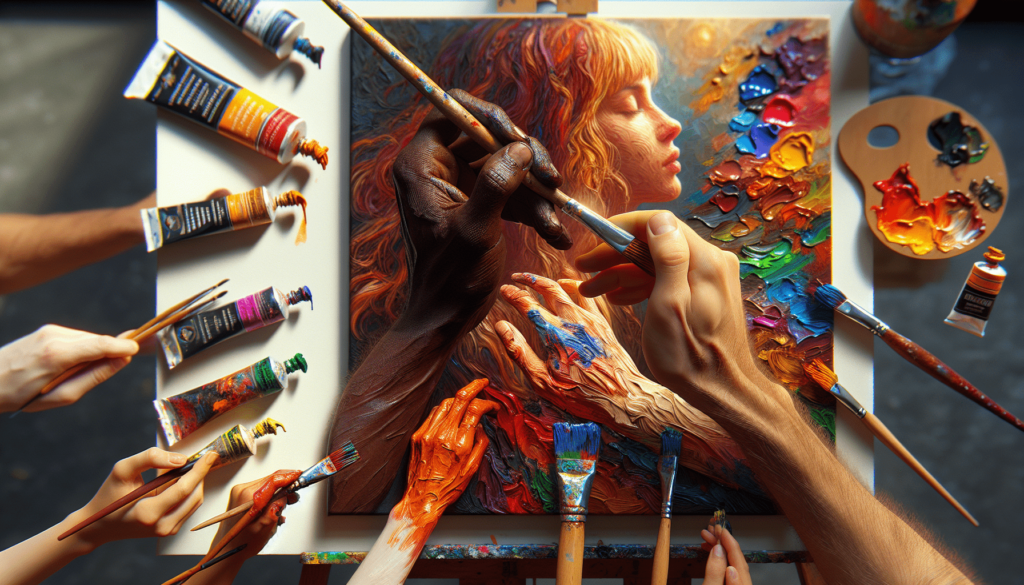
Advantages of Oil Paints in Easel Painting
The inherent qualities of oil paints serve to accentuate the benefits they offer, particularly in the realm of easel painting.
Rich and Vibrant Colors
Oil paints are revered for their nonpareil richness. They can produce vibrant, luminous hues, which enhance the visual appeal and emotive power of the artwork.
Gradual Drying Process
The relatively slow drying process of oil paints provides room for spontaneity and deliberation, affording artists the liberty to operate at their own pace. This gradual drying property is often considered a significant advantage in easel painting.
Blendability and Textural Effects
Oil paints possess excellent blendability, facilitating the smooth transition of colors and contributing to the depth of the artwork. Furthermore, the consistency of oil paints allows for the creation of varied textures, adding substance and tactility to the painting.
Longevity and Preservation
The durability of oil paints accounts for the longevity of the artwork. They preserve the integrity and appeal of the painting, ensuring its survival through generations.
Compatibility with Easel Painting Techniques
Oil paints are remarkably compatible with a myriad of painting techniques characteristic of easel painting.
Opacity and Transparency
The versatility of oil paints allows for the manipulation of their opacity and transparency. This adaptability facilitates the exploration of various painting techniques.
Impasto and Brushwork
The thick and pasty nature of oil paints makes them ideal for the impasto technique, where the paint is laid heavily on the canvas to create a textured surface. Additionally, brushwork can be prominently showcased or diffused, based on the artist’s intent.
Scumbling and Glazing
Scumbling, a process involving the application of a thin, opaque layer of paint to create a soft and diffused effect, can be achieved using oil paints. As noted earlier, oil paints also allow for the employment of glazing techniques, adding to the depth and luminosity of the artwork.
Color Mixing and Blending
The smooth and malleable nature of oil paints facilitates seamless color mixing and blending. This aids in creating smooth gradients and intricate detailing, enhancing the artwork’s overall appearance.
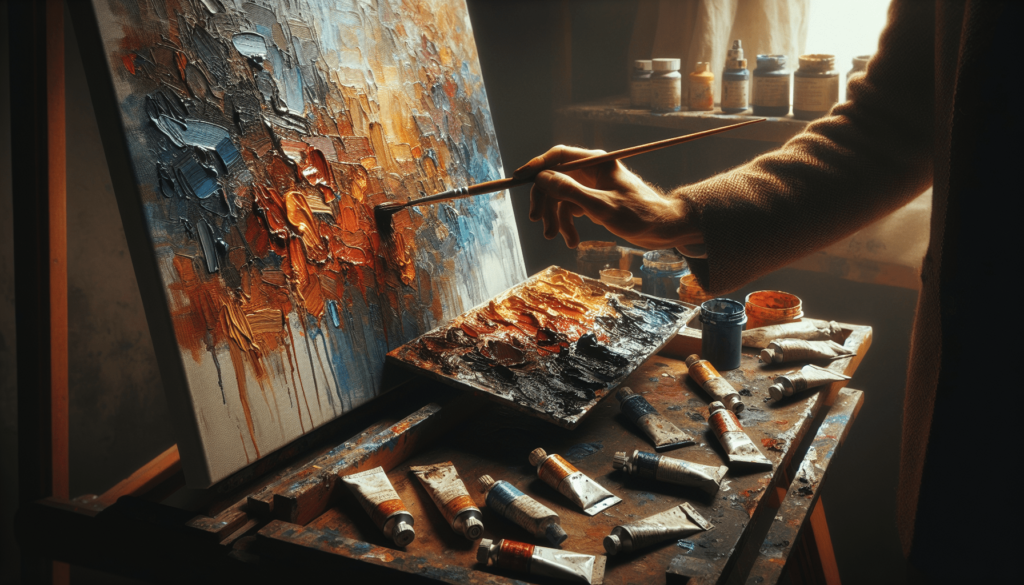
Versatility in Different Painting Styles
Oil paints provide the flexibility to be adopted in a myriad of painting styles, further emphasizing their versatility.
Realism and Portraiture
Oil paints are incredibly effective in rendering highly detailed and realistic depictions, making them a suitable medium for realism and portraiture. The ability to perfectly blend colors and achieve varying skin tones contributes to the creation of lifelike portraits.
Impressionism and Plein Air
Impressionism, characterized by the portrayal of light and its changing qualities, was achieved through the use of oil paints. Similarly, oil paints are preferable for plein air painting due to their durability and resistance to environmental factors.
Expressionism and Abstraction
Oil paints are capable of vividly manifesting emotional intensity and subjective interpretations in expressionism and abstraction. The application of thick, bold strokes or diluted, flowing washes enables artists to convey feelings and ideas abstractly.
Contemporary and Experimental
Contemporary and experimental art aesthetics heavily rely on oil paints due to their flexibility and durability. Oil paints provide a broad spectrum of possibilities, thus encouraging unique expressions and innovative techniques.
Availability and Accessibility of Oil Paints
The global popularity of oil paints contributes to the ease of access and availability of these mediums.
Wide Range of Brands and Colors
Owing to their global popularity, oil paints come in a wide variety of brands and colors. This allows artists to choose from an extensive palette, catering to their precise needs and preferences.
Affordability and Availability
Despite their superior quality, oil paints are generally affordable and widely available. This quality, coupled with their versatility and durability, contributes to their status as a dominant medium in easel painting.
Global Popularity and Usage
Oil paints enjoy massive popularity and usage worldwide. Their historic significance, unparalleled properties, and widespread availability have cemented their status in the global art community, making them a preferred choice for artists everywhere.
Development and Evolution of Oil Paints
The journey of oil paints is an interesting tale of development and evolution, reflecting the dynamic nature of the art world.
Historical Development
The evolution of oil paints can be traced back to the early days of art, where artists experimented with various natural resources to create pigments. Over time, the formulation of oil paints has been refined and enhanced, providing artists with a more sophisticated and versatile medium.
Modern Innovations and Pigment Technology
Modern technological advancements have significantly impacted the construction and refinement of oil paint formulations. Innovations in pigment technology have led to the creation of a wider range of colors, improved durability, and enhanced handling properties, remarkably elevating the quality of oil paints.
Challenges and Limitations of Oil Paints
Despite their numerous advantages, oil paints do present certain challenges and limitations.
Drying Time and Patience
The slow drying time of oil paints, while advantageous for some, may pose a challenge for artists looking for quick results. It requires patience and careful planning, especially while working on layering or when the painting necessitates quick completion.
Toxicity and Safety Precautions
Some pigments used in oil paints can be toxic, necessitating safety precautions during use and disposal. It is vital that artists educate themselves about these potential dangers to sustain a safe and healthy practice.
Surface Preparation and Care
The use of oil paints requires careful surface preparation and after-care. Failure to properly prime the surface may impact the longevity of the painting. Similarly, the finished artwork needs appropriate care to preserve its integrity.
Comparison with Other Painting Mediums
Although oil paints hold a prominent position in easel painting, several other painting mediums also offer significant contributions to the art world.
Watercolor and Gouache
While watercolor and gouache can lend a delicate and transparent effect, they may not offer the outstanding richness and depth of oil paints. Nevertheless, these mediums possess their own unique charm and artistic allure.
Acrylic and Tempera
Acrylic and tempera paints are known for their quick-drying properties and water resistance. However, they may lack the extended workability and brilliant luminosity that characterizes oil paints.
Pastel and Ink
Pastel and ink bring a unique set of qualities to the table, with their specific textures and distinctive methods of application. Yet, they offer a different artistic experience when compared to the versatility and durability of oil paints.
Perspectives and Preferences of Artists
The choice of medium is often subjective, firmly rooted in the artist’s perspective, and colored by their familiarity and adaptability.
Artistic Tradition and Heritage
Oil paints, with their historic significance and ties to renowned masterpieces, carry a sense of artistic tradition and heritage. As such, they hold a certain appeal for some artists who appreciate their historic value.
Personal Choice and Familiarity
Individual preferences and familiarity play a crucial role in an artist’s choice of paint. Some opt for oil paints owing to their remarkable functionality, while others may prefer different media due to personal comfort or specific aesthetic goals.
Exploration and Experimentation
The field of art thrives on exploration and experimentation. Artists may choose to work with oil paints to explore their potential or may switch between different media to discover new artistic dimensions.
In conclusion, the dominance of oil paints in easel painting can be attributed to their historic importance, versatility, durability, and availability. They offer a wide range of possibilities, compatible with various painting styles and techniques. Despite certain challenges and in comparison with other media, oil paints remain a preferred choice for many artists. Yet, it is important to recognize the role of individual preferences and the dynamic nature of art in shaping the future of oil paints in easel painting.
